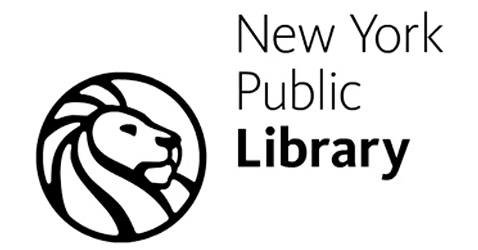The primary goal of a logo is to communicate a brand. If done properly, the logo should be a singular representation of that organization as well as an element of a brand’s foundation. Furthermore, a logo can even echo the direction of a company or show a nature that the company wants to show.
It should not only embody the above, but be a single, recognizable symbol to which reverence may be attached, or convey the core belief or meaning. Talk about highfaluting!
The above definition echoes the sentimental idealism of my graphic design mentor. All of the above is true, but how easy is this to do for designers in the real world?
One can hear the ‘old guard’ of graphic design complaining already. “Ha! What hope have you got Sonny? The real world is full of low grade noise made by low grade designers!”
Low Grade Noise
I don’t dare speak against graphic design educational systems the way some old-school designers do, but some design schools train their designers so well that you can look at their work and know where they were trained!
So if the low grade noise is so apparent and pervasive, what hope is there for the average graphic designer out there in the suburbs trying to make a living? Are you going to get the chance to design a logo for a major multinational organization? Chances are that you won’t. It is more likely that you will design for the local pizza parlor or cafe. If you are lucky, a chain of local stores.
When designing a logo, you have to understand what the logo needs to represent (among other things). In the following weeks, I aim to cover several key factors to keep in mind while designing the varying logos out there to avoid adding to the low grade noise.
Designing With Context and Meaning
One important factor and possible hero of any logo you design is context and meaning. Look at your client’s operations in its environment, be it a local Pizza parlor who services the local beer drinking constabulary, or another known institution. Knowing who the logo is aimed at is a key factor. The logo must speak to the target audience.
Knowing the environment that the organization/business sits in is key to success. This might mean that the logo you design is not as clean and simple as you would like, but is corny or cliche instead. Don’t think about your folio.
After all, cheese is an important ingredient in pizzas!
Logos can be strange to the greater population, but they can become that singular, recognizable symbol for the target audience. Let’s see this in action.
A Real World Example
The New York Public Library had a refresh of their logo in 2009 and while the process was a long one, they settled on a modernized restatement of their old logo.
As an outsider, and donning a designer’s critiquing hat, I see this logo and there is nothing that jumps out at me that represents a library. In fact, there were even a few factors that bothered me. The uneven black stroke, the potential association with African art, the Lion King movie, the symbolism of power of using a lion and the circular device were all things that might mix the message or hinder the logo from being successful. Obviously we are not privy to how the selection process went and ultimately, the client does choose the final design. We can only judge the finished logo.
There seems to be many things that could be done to ‘improve’ the logo – dropping the circular device would be a start. However, the overriding factor – or hero – that seems to succeed is the meaning of the logo in it’s local environment – what the logo means in context.
I am not from New York. I was not taken on excursions to the library for school, even if such a thing happens. I never walked past the marble lion statue. The library is just too far away for me to be a member. I do not fit in the Library’s environment and so I can only see the logo out of context.
To spell it out, the logo is likely to have (or develop) strong meaning for a New Yorker and not someone from another state, let alone another country.Measuring Success
Paul Rand summed it up when he said “Don’t try to be original. Try to be good.”
The true measure of success is not whether designers think it echoes a multitude of other logos, but the recognition of its local and potential audience. While I do believe that as designers, we should hope to instil more into a logo, context and meaning is a major factor that designers should consider in the back of their minds – especially while thumb nailing.
Image via Oleksii Iezhov / Shutterstock
Frequently Asked Questions about Logo Design in the Real World Context and Meaning
What is the importance of context in logo design?
Context plays a crucial role in logo design. It refers to the circumstances, conditions, or setting in which a logo exists. This can include the industry the business operates in, the target audience, cultural norms, and even current design trends. A logo should be designed in a way that it fits seamlessly into its context, making it relevant and meaningful to its audience. A well-contextualized logo can help a business to connect with its audience, convey its brand message effectively, and stand out from the competition.
How does a logo convey meaning?
A logo conveys meaning through its design elements such as colors, shapes, typography, and imagery. Each of these elements can symbolize different concepts or emotions. For example, the color red can symbolize passion or urgency, while a circle can represent unity or completeness. By carefully choosing and combining these elements, a logo can convey the core values, mission, and personality of a brand.
What factors should be considered when designing a logo?
When designing a logo, it’s important to consider factors such as the brand’s identity, target audience, industry trends, and cultural norms. The logo should reflect the brand’s personality and values, appeal to its target audience, and be appropriate for the industry. It’s also important to consider the practical aspects of logo design, such as scalability and versatility, to ensure that the logo looks good in different sizes and on different platforms.
How can a logo help a business to stand out from the competition?
A unique and well-designed logo can help a business to differentiate itself from its competitors. It can convey the unique selling proposition of the business, create a memorable impression, and build brand recognition. A distinctive logo can also enhance the perceived value of a brand and foster customer loyalty.
What is the role of color in logo design?
Color plays a significant role in logo design as it can evoke emotions, convey messages, and influence perceptions. Different colors can symbolize different things. For example, blue can symbolize trust and reliability, while green can symbolize nature and growth. By choosing the right colors, a logo can effectively communicate the brand’s message and connect with its target audience on an emotional level.
How can a logo evolve over time?
As a business grows and evolves, its logo can also evolve to reflect the changes. This can involve subtle tweaks to modernize the logo or a complete redesign to signify a major shift in the business. However, it’s important to maintain some elements of the original logo to ensure continuity and preserve brand recognition.
What is the process of logo design?
The process of logo design typically involves research, brainstorming, sketching, prototyping, and refinement. It starts with understanding the brand, its target audience, and its industry. Then, ideas are brainstormed and sketched out. These sketches are then turned into digital prototypes, which are refined until the final logo is created.
How can a logo be tested?
A logo can be tested through methods such as focus groups, surveys, and A/B testing. These methods can provide valuable feedback on the logo’s appeal, memorability, and effectiveness in conveying the brand’s message. The feedback can then be used to refine the logo before it’s finalized.
What are some common mistakes in logo design?
Some common mistakes in logo design include making the logo too complex, following trends too closely, using inappropriate fonts or colors, and not considering the logo’s scalability and versatility. These mistakes can make the logo less effective in communicating the brand’s message and less appealing to its target audience.
How can a logo contribute to a brand’s success?
A well-designed logo can contribute to a brand’s success by enhancing its visibility, building its identity, and fostering customer loyalty. It can create a memorable impression, convey the brand’s message effectively, and differentiate the brand from its competitors. A strong logo can also enhance the perceived value of a brand and contribute to its overall brand equity.
Felix Mak, a graphic designer for 20 or so years, has been working quietly in the suburbs of Melbourne - and has more recently been delving into the art of web design and development and the wonders of shivs and javascript libraries. A strong proponent of simple design and simple communication, he has a love of the lushness of art nouveau design.





